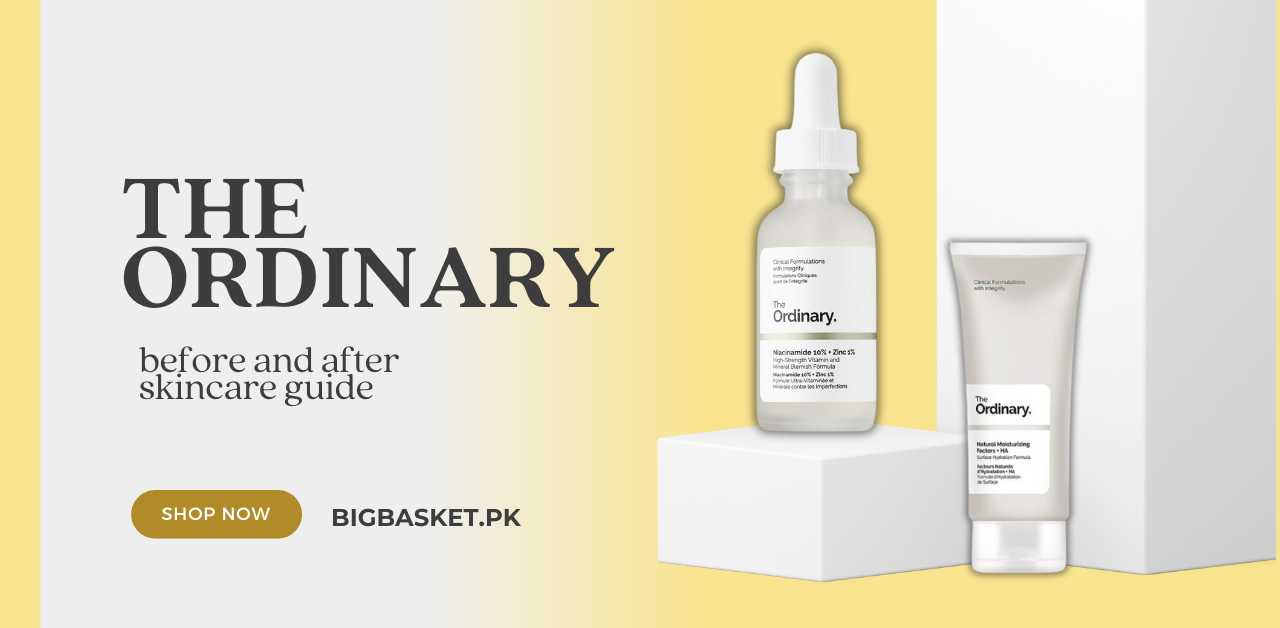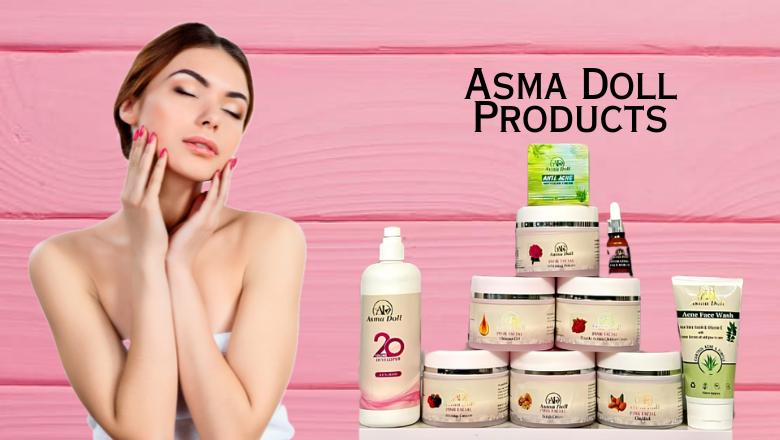In the vast world of skincare, knowing how to effectively layer products can make all the difference in achieving a radiant complexion. This guide will explore the best practices for utilizing ordinary skincare products tailored to various skin types. By understanding how to create a cohesive skincare routine, you can address specific skin concerns, enhance hydration, and combat the signs of ageing. Dive into this comprehensive guide to master the art of layering your skincare regimen for optimal results.
Contents
- 1 What is the Best Skincare Routine for My Skin Type?
- 2 How to Build a Skincare Routine with Ordinary Products?
- 3 What Are the Benefits of Using Acids in My Skincare Regimen?
- 4 How to Incorporate Serums into My Skincare Routine?
- 5 What is the Importance of Cleansers in My Skincare Routine?
- 5.1 Types of Cleansers: Gel, Foam, and Cream
- 5.2 How Cleansers Prepare Your Skin for Layering Products
- 5.3 Common Ingredients to Look for in Cleansers
- 5.3.1 What is the best way to start with an ordinary skincare routine?
- 5.3.2 How do I layer my skincare products correctly?
- 5.3.3 Can I use acid 2 in my routine?
- 5.3.4 What’s the deal with squalane? Is it really that good?
- 5.3.5 How do I incorporate natural moisturizing factors into my regimen?
- 5.3.6 Is it safe to mix different ordinary skincare products?
- 5.3.7 How often should I use ordinary ascorbyl in my routine?
- 5.3.8 What if I have dry skin? What products should I look for?
- 5.3.9 How do I know if a product is suitable for my skin type?
What is the Best Skincare Routine for My Skin Type?
Understanding Different Skin Types: Oily, Dry, and Sensitive
To create an effective skincare routine, it’s crucial to first understand your unique skin type. Oily skin often produces excess sebum, leading to shine and a tendency for breakouts. Individuals with oily skin should consider using products containing salicylic acid, which helps to regulate oil production and reduce the appearance of pores. Dry skin, on the other hand, lacks moisture and can feel tight or flaky. For this skin type, incorporating hydrators like hyaluronic acid and squalane is vital to enhance moisture levels and restore the skin barrier. Sensitive skin is easily irritated and may react negatively to harsh ingredients. Therefore, it’s essential for those with sensitive skin to choose ordinary products that are fragrance-free and formulated with gentle components.
Identifying Signs of Ageing and Skin Concerns
As we age, our skin undergoes various changes, often manifesting as wrinkles, fine lines, uneven skin tone, and loss of elasticity. Recognizing these signs of ageing is the first step in addressing them with the right skincare products. A common skin concern is uneven skin tone, which can be improved using brightening agents like vitamin C. Additionally, the use of peptides and retinol can significantly enhance skin texture and promote cell turnover. If you’re noticing these signs, an ordinary skincare routine that includes targeted treatments for your specific concerns will be incredibly beneficial.
Choosing Ordinary Products for Your Unique Skin Type
Once you have identified your skin type and specific concerns, the next step is to choose suitable ordinary skincare products. For oily skin, opt for gel-based cleansers and water-based serums that hydrate without adding extra oil. Those with dry skin should look for emollient-rich creams and hydrators that contain natural moisturizing factors. For sensitive skin, consider using soothing ingredients and avoid direct acids that may cause irritation. Understanding which ordinary products to incorporate into your routine is essential for achieving a balanced regimen tailored to your skin’s needs.
How to Build a Skincare Routine with Ordinary Products?
Step-by-Step Guide to Layering the Ordinary Products
Building an ordinary skincare routine involves a systematic approach to layering products effectively. Start with a gentle cleanser to cleanse the skin, removing dirt and dead skin cells. Following this, apply a toner or a water-based serum to prep your skin for better absorption of subsequent products. Next, introduce active ingredients such as niacinamide or salicylic acid to target specific concerns. After allowing these products to absorb, layer an emulsion or moisturizer containing squalane to lock in hydration. Finally, finish your regimen with a broad-spectrum sunscreen during the day to protect your skin from harmful UV rays. This step-by-step approach ensures that each product effectively penetrates the skin, maximizing benefits.
Essential Components of an Effective Skincare Regimen
An effective skincare regimen consists of several essential components that work together to achieve desired results. Cleansers, serums, moisturizers, and sunscreens form the backbone of any routine. Each component plays a critical role: cleansers remove impurities, serums deliver concentrated active ingredients, moisturizers hydrate and protect, and sunscreens shield the skin from sun damage. By incorporating a variety of ordinary skincare products that address your unique concerns, you can create a comprehensive regimen that promotes healthy skin.
Common Mistakes in Building Your Skincare Routine
Many individuals make common mistakes when constructing their skincare routine, which can hinder their progress. One prevalent error is layering too many products without allowing adequate time for absorption, leading to product pilling and ineffective results. Additionally, skipping sunscreen is a major misstep, as UV exposure can exacerbate signs of ageing. Another common pitfall is using products incompatible with your skin type, which can lead to irritation or breakouts. To avoid these mistakes, it’s essential to research each product thoroughly and pay attention to how your skin responds to different formulations.
What Are the Benefits of Using Acids in My Skincare Regimen?
Types of Acids: Salicylic Acid, Hyaluronic Acid, and Lactic Acid
Incorporating acids into your skincare regimen can yield significant benefits for your skin. Salicylic acid, a beta hydroxy acid, is particularly beneficial for oily and acne-prone skin as it penetrates deep into the pores to dissolve excess oil and dead skin cells. Hyaluronic acid is a powerful humectant that attracts moisture, making it an excellent choice for hydrating all skin types. Lactic acid, an alpha hydroxy acid, gently exfoliates the skin’s surface, improving texture and promoting a brighter complexion. Understanding the different types of acids and their benefits is key to enhancing your ordinary skincare routine.
How Direct Acids Can Improve Skin Texture
Direct acids can dramatically improve skin texture by promoting exfoliation and cell turnover. Regular use of products containing alpha or beta hydroxy acids can help to remove dead skin cells, revealing a smoother and more radiant layer beneath. This process not only helps to diminish the appearance of fine lines and wrinkles but also addresses issues like uneven skin tone and rough patches. Incorporating these acids into your skincare regimen, particularly in the evening, can transform your complexion over time.
Safety Tips for Using Acids on Sensitive Skin
While acids offer numerous benefits, it’s essential to approach their use with caution, especially for those with sensitive skin. Start by introducing one acid product at a time and apply it a few times a week to gauge your skin’s tolerance. Always follow up with a soothing moisturizer to help maintain the skin barrier. Additionally, using a broad-spectrum sunscreen during the day is paramount, as acids can increase sensitivity to sunlight. By following these safety tips, you can enjoy the benefits of acids without compromising your skin’s health.
How to Incorporate Serums into My Skincare Routine?
Choosing the Right Serums: Vitamin C, Niacinamide, and Peptides
Serums are a crucial aspect of an effective skincare routine, providing concentrated doses of active ingredients that target specific concerns. Vitamin C is renowned for its brightening properties and ability to combat signs of ageing, making it an excellent choice for those looking to improve uneven skin tone. Niacinamide, on the other hand, is a versatile ingredient that helps to regulate oil production, minimize pores, and improve skin texture. Peptides are another valuable addition, as they support collagen production and enhance skin firmness. Choosing the right serums based on your skin concerns can significantly elevate your ordinary skincare routine.
Layering Water-Based Serums for Maximum Hydration
When incorporating water-based serums into your regimen, layering techniques are essential for maximizing hydration. Begin with the lightest formula and work your way up to heavier textures. For instance, apply a hydrating serum with hyaluronic acid first, followed by a more emollient serum containing squalane. This method ensures that each product penetrates effectively, providing optimal hydration and nourishment to the skin. Additionally, applying serums while the skin is still slightly damp can enhance absorption and hydration levels.
Timing and Application Techniques for Serums
Timing and application techniques are crucial when using serums in your skincare routine. It’s best to apply serums immediately after cleansing and toning, allowing the active ingredients to penetrate the skin effectively. Use a few drops of serum and gently press it into the skin using your fingertips, avoiding any harsh rubbing that could irritate the skin. For maximum results, consider using specific serums at different times of the day; for example, applying vitamin C in the morning for its antioxidant benefits, while using retinol or other actives at night to promote skin renewal.
What is the Importance of Cleansers in My Skincare Routine?
Types of Cleansers: Gel, Foam, and Cream
Cleansers are the foundation of any skincare routine, as they prepare your skin for effective layering of products. There are various types of cleansers available, each catering to different skin types and preferences. Gel cleansers are ideal for oily skin, as they provide a deep cleanse without stripping essential moisture. Foam cleansers are lightweight and create a refreshing feeling, suitable for combination skin. Cream cleansers offer hydration and are best suited for dry or sensitive skin, helping to maintain the skin barrier while effectively removing impurities.
How Cleansers Prepare Your Skin for Layering Products
Properly cleansing your skin is essential for creating a clean canvas for layering your ordinary skincare products. A good cleanser removes makeup, dirt, and dead skin cells, ensuring that subsequent products can penetrate effectively and provide maximum benefits. Without a proper cleanse, products may sit on the surface of the skin, leading to clogged pores and diminished efficacy. Incorporating cleansing into your daily routine, both morning and night, is vital for maintaining healthy skin and enhancing the effectiveness of your skincare regimen.
Common Ingredients to Look for in Cleansers
When selecting a cleanser, it’s important to look for beneficial ingredients that cater to your specific skin needs. For oily skin, consider cleansers with salicylic acid or tea tree oil for their oil-controlling properties. Those with dry skin should seek out hydrating ingredients such as glycerin or ceramides. Sensitive skin types may benefit from cleansers containing soothing ingredients like aloe vera or chamomile. By understanding which ingredients to seek in your cleansers, you can select products that complement your ordinary skincare routine while addressing your unique skin concerns.
What is the best way to start with an ordinary skincare routine?
If you’re new to skincare, start simple! Focus on a few key products like a gentle cleanser, a hydration booster, and a moisturizer. The Ordinary has some great options for beginners, so check out their basics to get you started.
How do I layer my skincare products correctly?
Layering skincare can be a game changer! Remember the general rule: thinnest to thickest. Start with water-based products like serums, then move on to emulsion products, and finish off with heavier creams or oils. This way, you ensure your skin gets the best benefits from each layer.
Can I use acid 2 in my routine?
Totally! Acid 2 can help with exfoliation, but make sure to use it correctly. It’s best to apply it after cleansing and before moisturizing. Just keep an eye on your skin’s reaction, especially if you’re new to skincare.
What’s the deal with squalane? Is it really that good?
Absolutely! Squalane is fantastic for hydration and is suitable for all skin types. It helps lock in moisture, making it perfect for dry skin. If you’re looking for a lightweight option, it’s one of the best products to incorporate into your routine.
How do I incorporate natural moisturizing factors into my regimen?
Natural moisturizing factors are great for keeping your skin hydrated. You can find them in many Ordinary products. Use them after your serums and before your moisturizer to help maintain your skin’s moisture barrier.
Is it safe to mix different ordinary skincare products?
Mixing products can be fine as long as you know what works for your skin. Just be cautious with strong active ingredients, especially if you’re new to skincare. Start by introducing one product at a time and see how your skin reacts!
How often should I use ordinary ascorbyl in my routine?
Ordinary ascorbyl is a great vitamin C product, and you can use it daily! Apply it in the morning before your sunscreen for the best protection against environmental stressors. Just make sure to patch test first if you’re new to skincare!
What if I have dry skin? What products should I look for?
If you have dry skin, look for hydrating ingredients like squalane and natural moisturizing factors. Emulsion products work wonders for adding moisture, so definitely include those in your ordinary skincare routine!
How do I know if a product is suitable for my skin type?
It’s best to do a little research and read skincare reviews! The Ordinary usually provides guidance on whether their products are suitable for all skin types. If you’re unsure, patch testing can help you determine if a product works for you.








